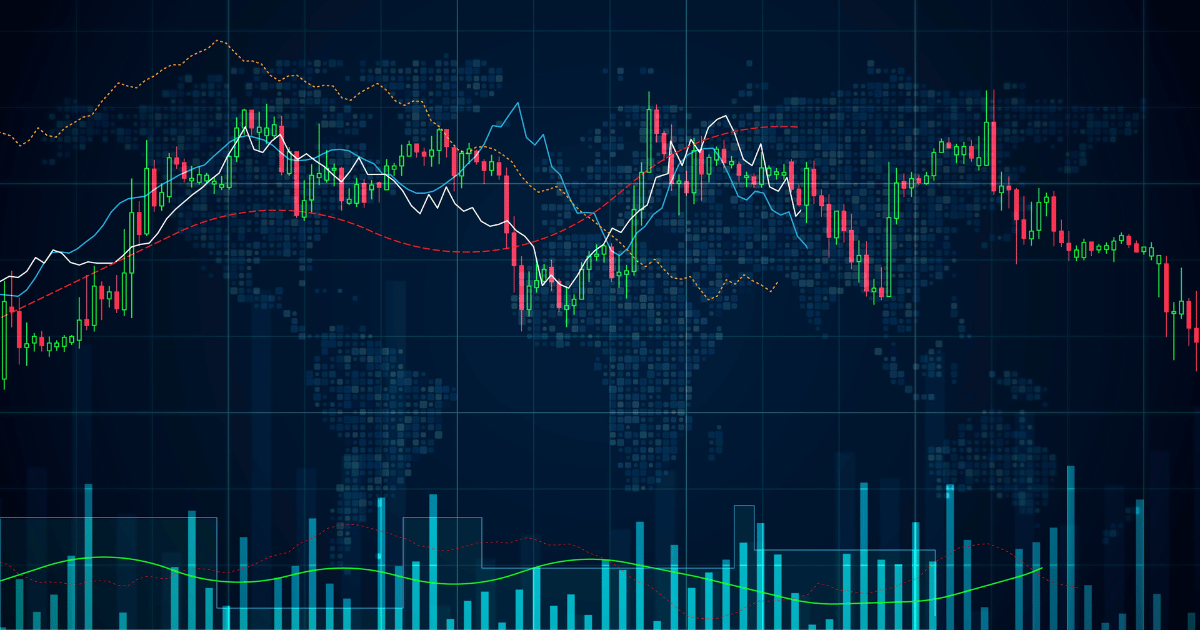TradingView Review

Trading is one of the most competitive industries in the world.
Every day, millions of traders participate in this zero-sum game — to make money, you need to take it from someone else. If you have the right combination of skill, discipline, and consistency, there's no limit to how much money you can make.
However, your competition is fierce, and you need every edge you can get.
If you want to be successful, buying good hardware, using a solid broker, and investing in the right charting software are all critical. You'll be at a serious disadvantage without these tools, which is something I'm all too familiar with.
I'll spare you the painful details, but I would have saved a lot of time, frustration, and money if I'd found TradingView sooner.
If you're wondering whether paying for TradingView is worth it, my answer is 100% yes. After upgrading about three years ago, I'll never use another charting software.
Here is a detailed review of TradingView's features, pricing, and plans, as well as information on how to choose the right plan for you.
TradingView Review Summary
- Overall rating:
- Best for: Day and swing traders
- Recommended plan: Essential or Plus (formerly Pro and Pro+)
TradingView is the best charting platform on the market.
It's fast, powerful, reliable, and extremely easy to use. That's why it's used by more than 50 million traders worldwide.
If you're an active trader and are serious about your trading, you should try TradingView Essential or Plus.
What is TradingView?
TradingView was founded in 2011 by Constantin Ivanov (CTO), Denis Globa (CEO), and Stan Bokov (COO). They previously created MultiCharts, a desktop software for professional traders.
After having success with MultiCharts, they decided to create a web-based version of MultiCharts for any retail trader with an internet connection.
They also wanted to add social features that would enable users to interact with each other and learn from each other's trading strategies.
And so, TradingView was born.
TradingView is a technical analysis charting platform built for active traders. The platform is available in web-based, desktop, and mobile versions.
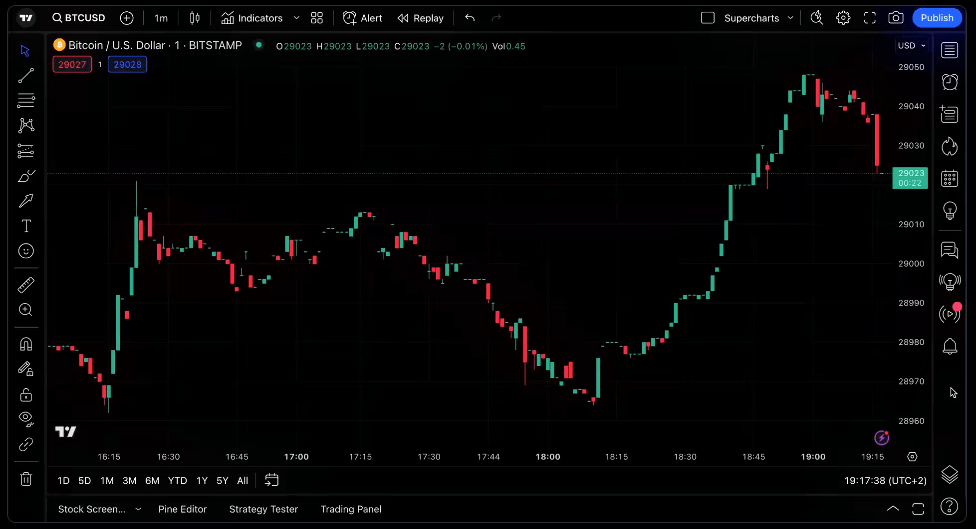
Charting software is used by traders to predict and profit from short-term price movements. There are thousands of trading strategies, and each strategy has its own set of technical indicators it deploys.
TradingView can handle them all.
You can chart securities from over 100 exchanges worldwide. Assets include stocks, ETFs, futures, forex, cryptocurrency, and more. TradingView has coverage for more than 1,350,000 instruments worldwide.
But here's where TradingView excels: it marries unlimited flexibility and customizability with unrivaled functionality and ease of use.
And I'm not the only one who loves TradingView — the platform has a 4.9-star rating from over one million user reviews.
Who is TradingView best for?
TradingView is best for active traders who are serious about their trading and are willing to make a small investment for premium charting.
If you're looking for free charting software, TradingView will work for a short period but you will likely bump into a paywall before too long.
While long-term investors and swing traders may use TradingView for some basic charting, that's not who the platform was built for. If that describes you, you can use TradingView but it may be overkill.
However, if you're an active trader — either new or experienced — and are taking the time to research whether TradingView is worth it, I highly recommend getting a free 30-day trial and deciding for yourself.
Which TradingView plan is best?
TradingView has four plans: Free, Essential, Plus, and Premium.
Note: The Essential and Plus plans were formerly named Pro and Pro+. The names were changed in October 2023.
As mentioned above, there are many features on TradingView, and upgrading to higher plans will unlock additional features.
I've listed the most important features in the table below.
| Free | Essential | Plus | Premium | |
| Cost (monthly) | $0 | $12.95 | $24.95 | $49.95 |
| Charts per layout | 1 | 2 | 4 | 8 |
| Indicators per chart | 2 | 5 | 10 | 25 |
| Price alerts | 5 | 20 | 100 | 400 |
| Ads | Yes | No | No | No |
| Bar Replay | ❌ | ✅ | ✅ | ✅ |
| Watchlists | 1 | Unlimited | Unlimited | Unlimited |
| Links | Free trial | Free trial | Free trial |
Note: In addition to the monthly prices listed above, each plan has an annual subscription option that will give you two months for free.
How to choose the right plan for you
For the vast majority of traders, either Essential or Plus is the best plan.
When choosing between Essential and Plus, you'll want to consider your trading style, how much screen real estate you have, and how many indicators you use.
- Essential: If you only trade a couple of assets and don't use many indicators, Essential is probably the right plan for you.
- Plus: If you trade many assets, set a lot of price alerts, and have multiple monitors, Plus may be a better fit.
I use Essential because I only trade with 4–5 indicators and don't need to watch more than two charts at a time.
To learn more about the features offered on TradingView, keep reading.
Key features offered on TradingView
Despite having a very sleek interface, TradingView is jam-packed with features.
I can't cover them all, but here's a short breakdown of the most popular features and the ones I use the most.
1. Charting and technical analysis
TradingView's charting is unparalleled in its versatility and functionality. Its charts are why it has amassed 50 million users.
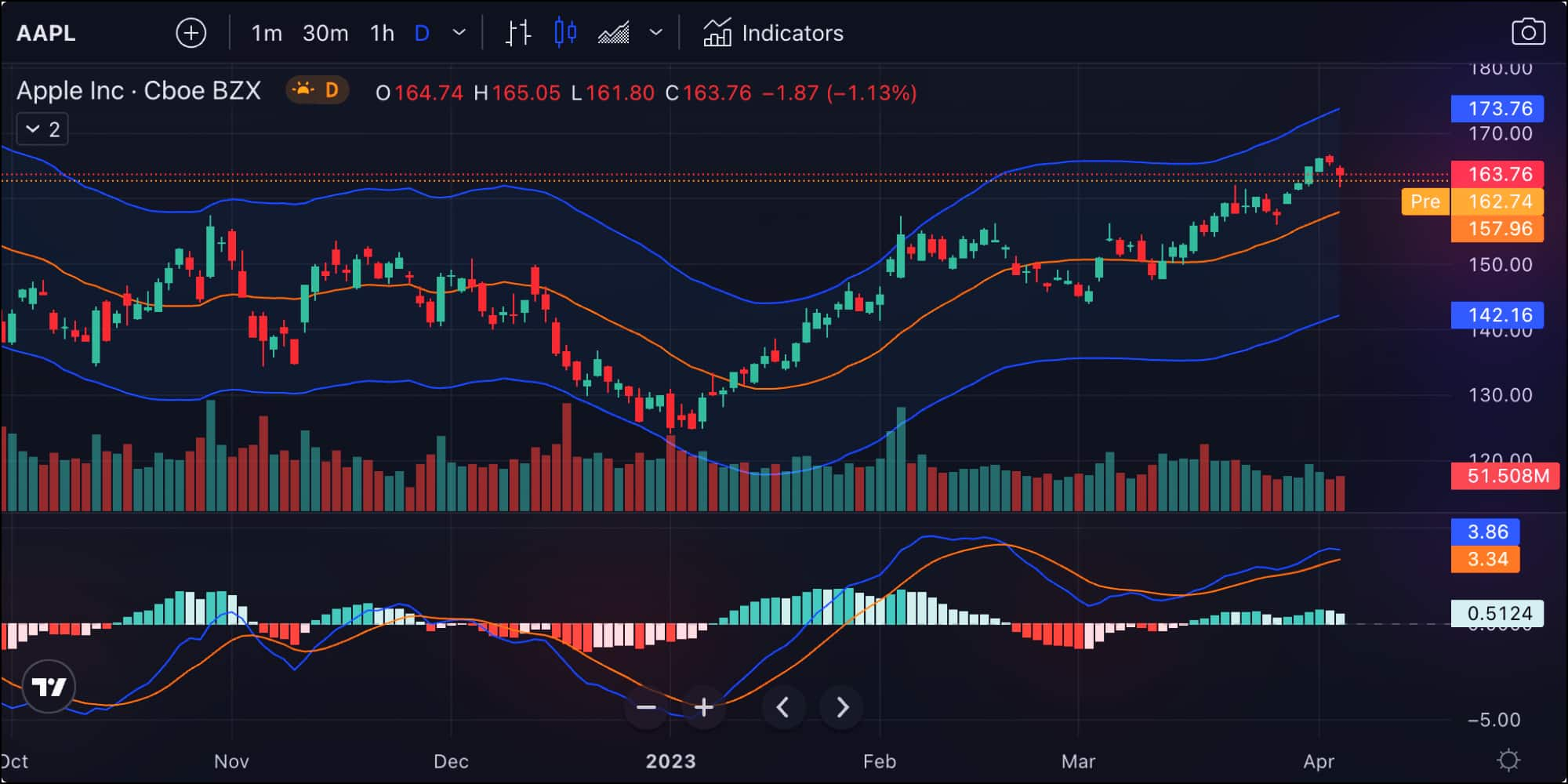
Here are some highlights:
- 400+ built-in indicators
- 100,000+ community-built indicators
- 110+ drawing tools
- 15+ chart types
- 20+ timeframes
You can draw anything on any chart, and do it on more than one million securities listed on 70+ exchanges from 50+ countries around the world.
While this seems like it would be overwhelming, TradingView's design and layout make it feel like you have both unlimited possibilities and complete control.
Many of these features are available on the free plan, but you'll quickly bump into a paywall when you start using a combination of indicators or certain drawing tools and chart types.
2. Screeners & heatmaps
After the charts, TradingView's next most popular feature is its screeners.
Day traders use screeners to filter thousands of securities looking for trade ideas. There are six main screeners that cover all the major asset classes: Stock, Stock 2.0, Forex, Crypto Pairs, Crypto Coins, and ETFs.
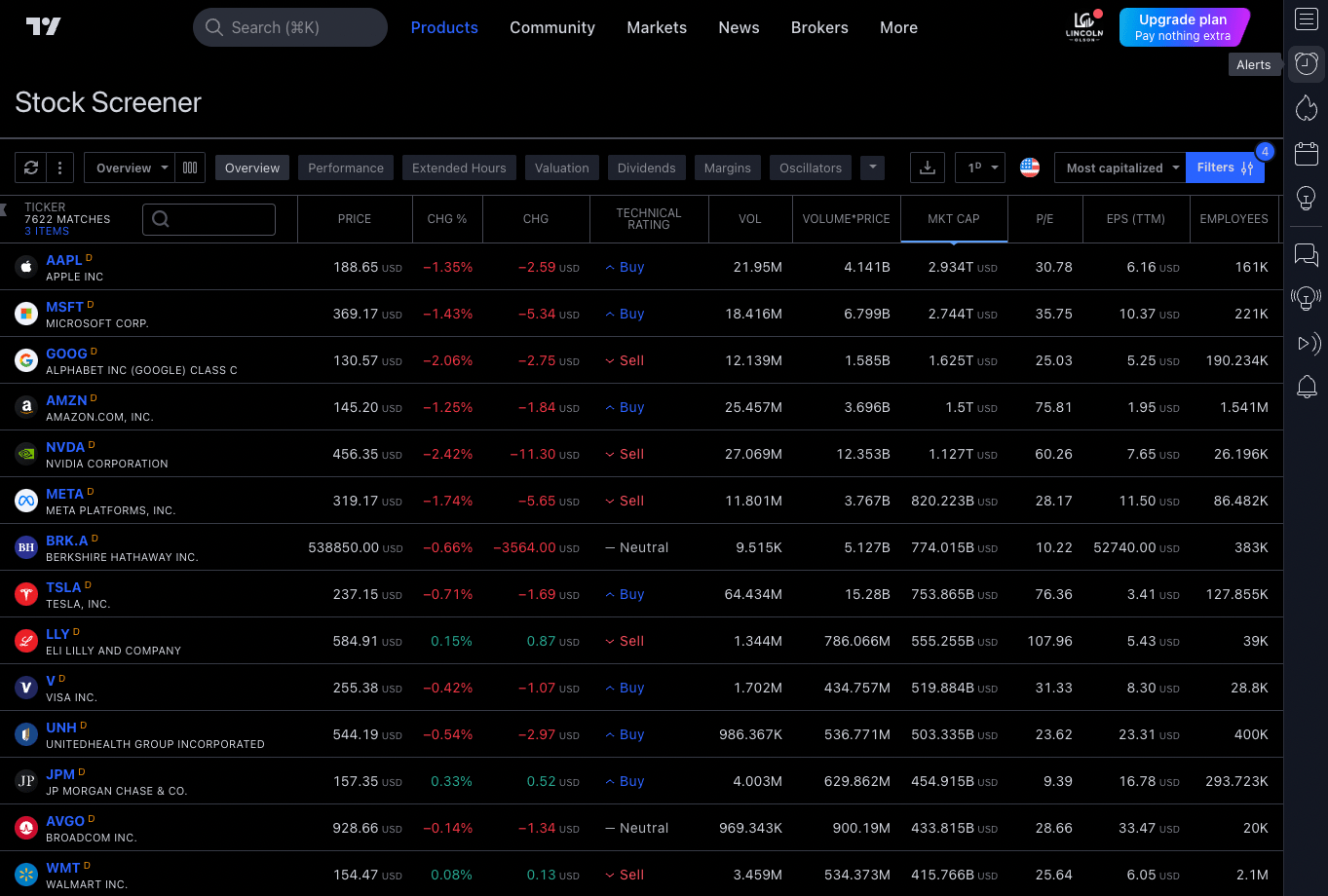
You can filter by any quantitative data point or indicator. For example, if you wanted to find large-cap tech stocks to buy, you could filter by market cap, industry, and oversold RSI.
TradingView also provides a Technical Rating, which ranges from Strong Sell to Strong Buy, and is found by calculating the average of 13 individual indicators.
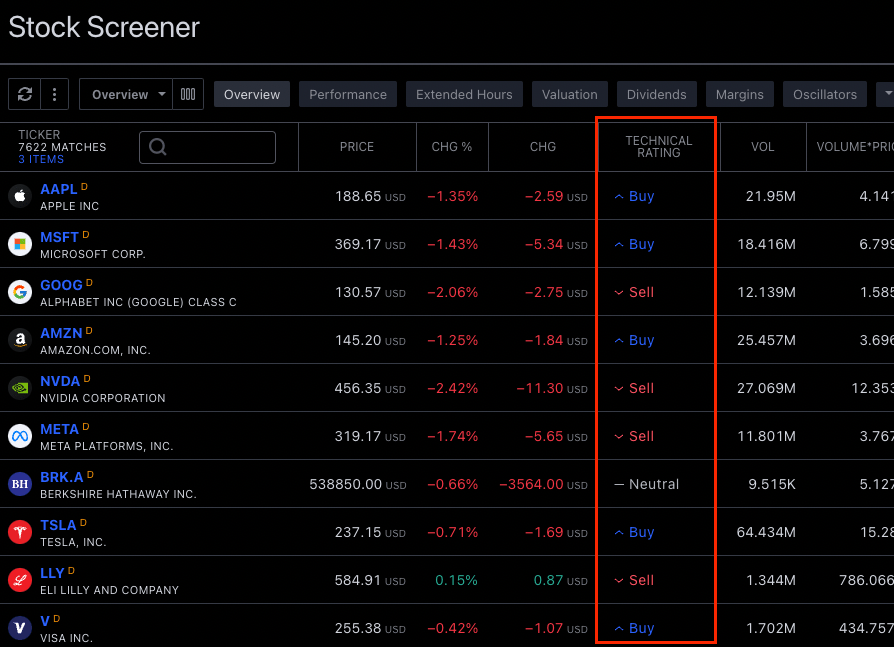
While this is a cool feature, I would not use it to make trading decisions, at least not on its own. I could not find a timeframe that TradingView recommends applying this feature to, so at most, I'd use it as a measurement for directional bias.
On that note, one of my favorite ways to quickly get a pulse on how the markets are moving on any given day is with heatmaps.
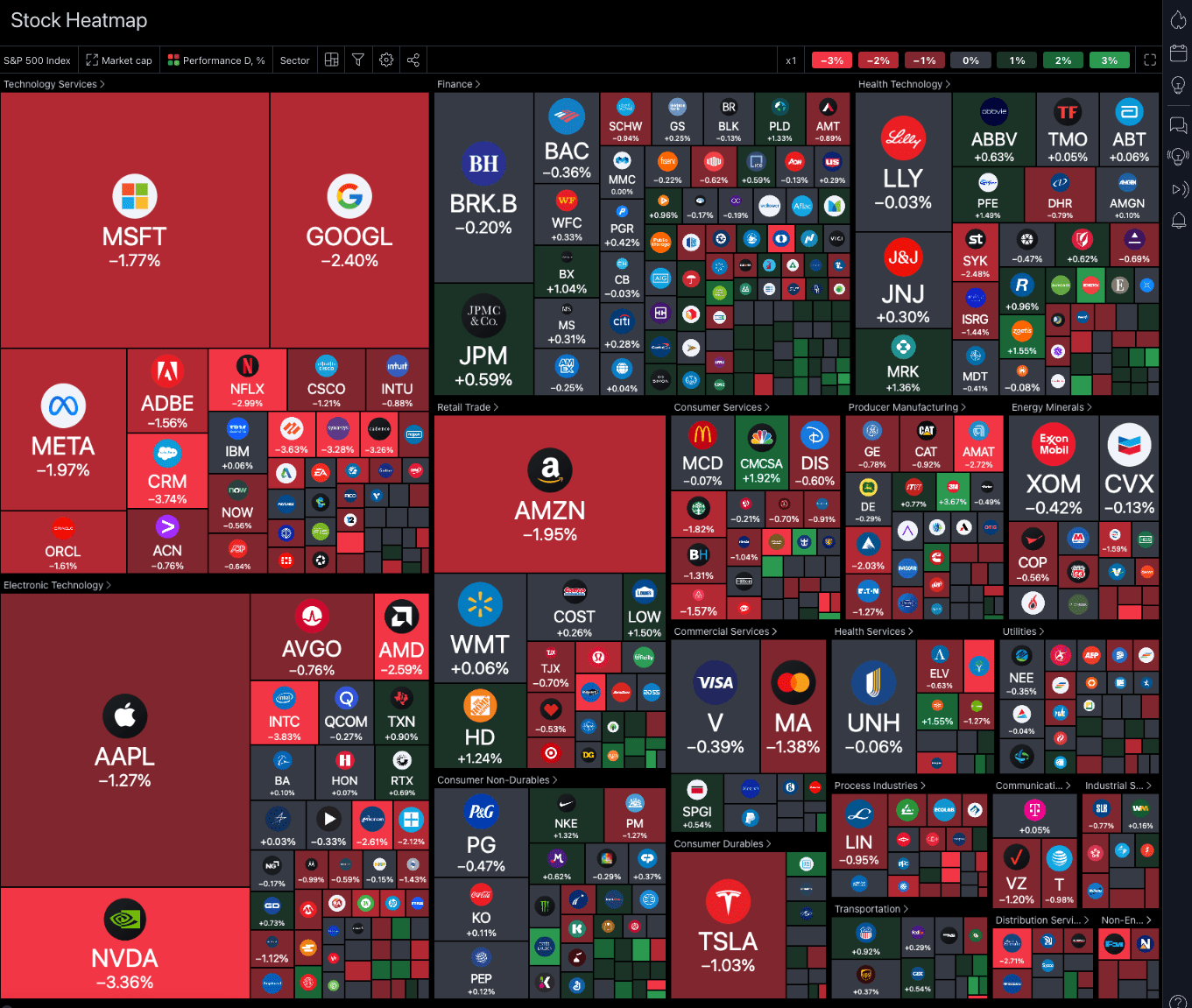
You can easily see how sectors are performing and how the biggest stocks in each sector are moving. I usually check this page an hour after the market opens to get a feel for investor sentiment.
3. Alerts
Most traders follow a handful of securities that they like to trade, which allows them to always be trading the best setups.
However, tracking multiple securities at once can be draining — that's where alerts come in.
Instead of constantly switching between assets and charts, most traders will set alerts at key price levels that they want to keep an eye on. Once an alert is hit, you can toggle to the security and wait for an entry/exit.
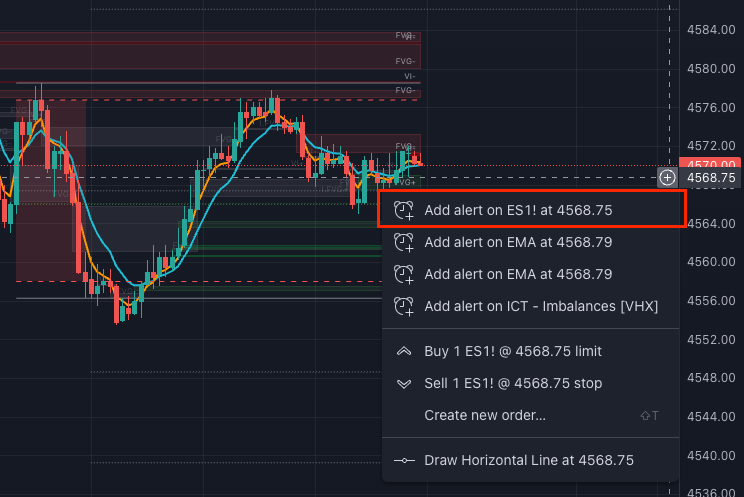
By setting more alerts, I don't have to watch my screens all day.
I can set an alert to notify me when an important level is hit and do the rest of my work without needing to monitor my charts.
4. Bar Replay
Other than the charts, Bar Replay is my favorite feature on TradingView. It's also the reason I ranked the platform #1 on my list of the best stock market simulators.
Bar Replay allows you to practice trading on real charts in any timeframe.
Not only does this help you become more familiar with the platform, but you can also go through thousands of practice trades in a fraction of the time it takes when trading live because you can fast-forward until you find an interesting trade setup.
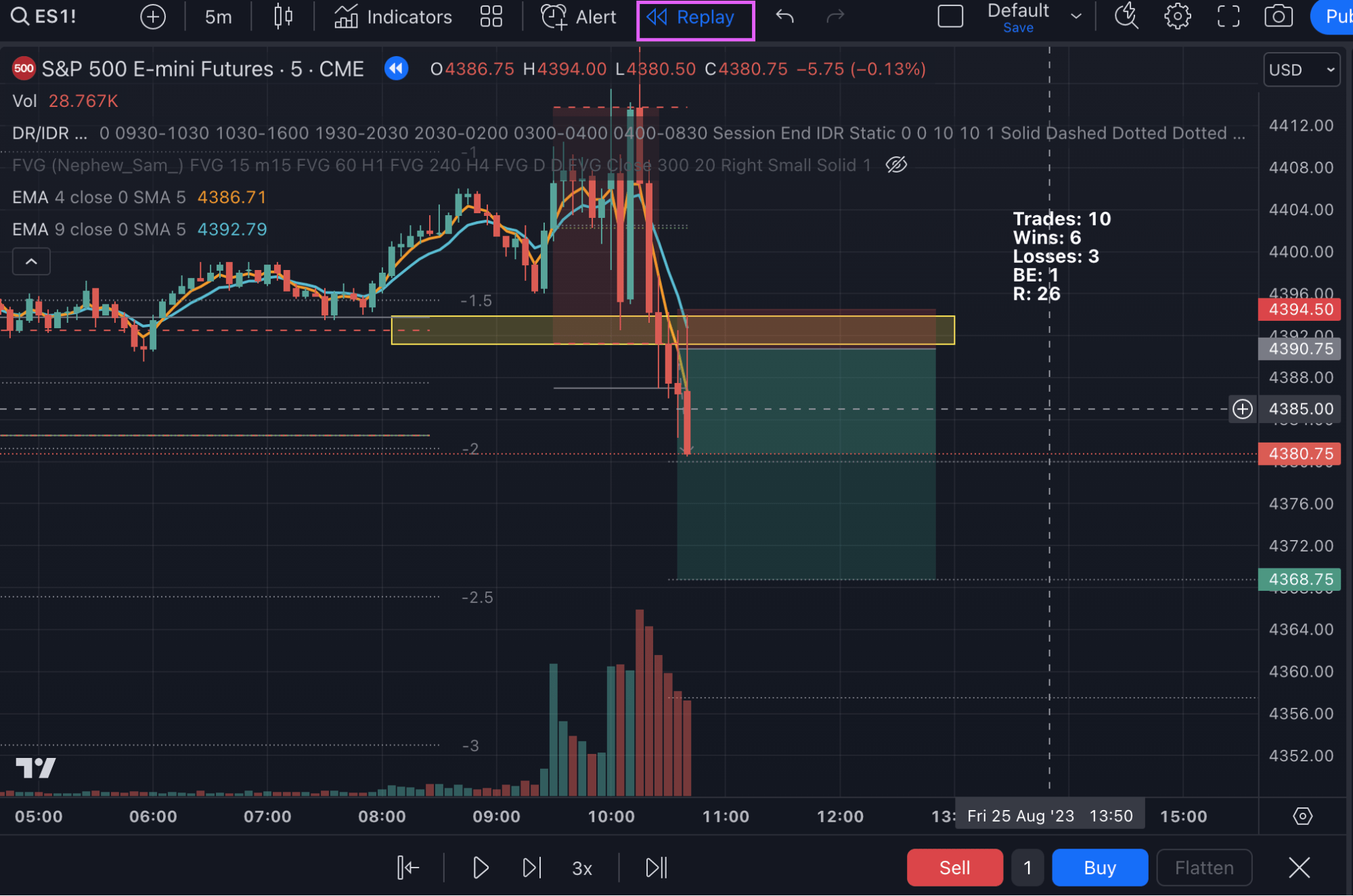
My trading dramatically improved after I started using TradingView's Bar Replay mode consistently, and it's my most recommended feature for new traders or those looking to hone their skills.
This feature alone has paid for my TradingView Essential subscription 100x over.
5. Community
TradingView also has several community features including trade ideas, educational content, scripts, and live streams.
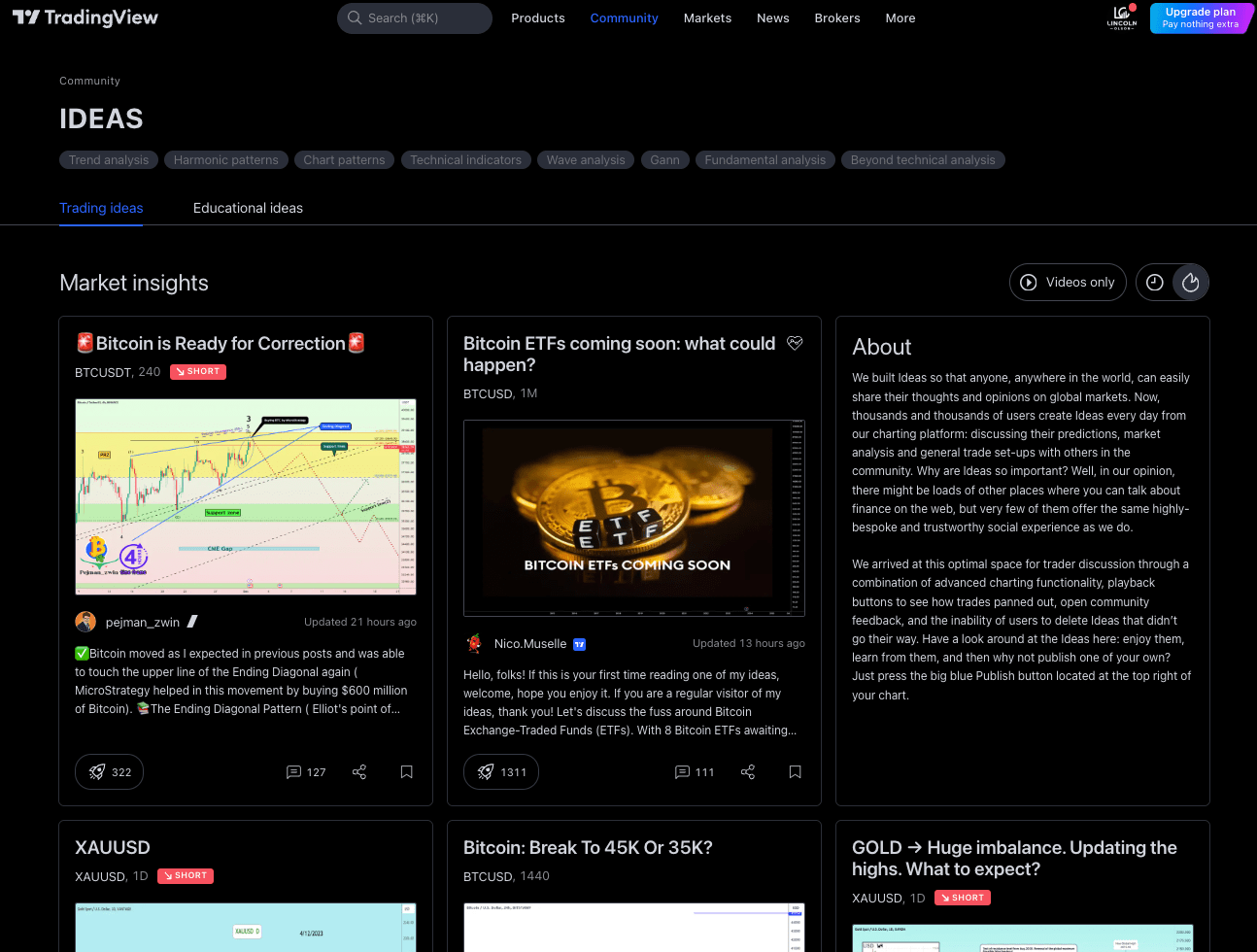
Learning from more experienced traders is one of the fastest ways to level up your trading skills. In the community section, I've learned about risk management techniques, trading styles, how to read the macro environment, and more.
Plus, these resources opened my eyes to the importance of discipline, meditation, sleep habits, and other soft skills that affect your trading.
6. Other features
Here are some other features you'll find on TradingView:
- Fundamental stock data
- Broker connections
- Custom scripting
- Chart exports
- Paper trading
- Global news
- Backtesting
- And more
TradingView pro and con summary
| Pros | Cons |
| Fast, powerful, and easy to use | The free plan is limited, so serious traders will want to upgrade |
| 400+ built-in indicators, 100,000+ community-built indicators, 110+ drawing tools, 15+ chart types, 20+ timeframes | The number of features can be overwhelming for some new traders |
| Chart on 1+ million securities listed on 70+ exchanges from 50+ countries around the world | |
| Sleek, minimal interface | |
| Great for new and advanced traders alike | |
| Trusted by 50 million users worldwide |
If you're still wondering whether a TradingView subscription is worth it or not, the best way to decide is to try it yourself.
You can get a free 30-day trial to any plan through our link.
Final verdict
One of the best ways to judge the quality of any product or service is by seeing how many people use it.
In this regard, TradingView's user base of 50 million users (more than 1 million of which are paying) tells you all you need to know about the platform.
I have never had a bad experience using TradingView. It has always been fast and has had every indicator I've ever searched for. I would not want to trade without it.
And after using it for 30 days, I'm confident you'll likely come to a similar conclusion.
FAQs
How much does TradingView cost?
TradingView has a range of plans, which vary in price from $0 (with ads) to $49.95 per month. The vast majority of serious traders are using either the Essential ($12.95/month) or Plus ($24.95/month) plans.
TradingView also offers professional plans, which range from $199.95 to $499.95 per month. All options also offer yearly payment options.
Is TradingView free to use?
Yes, you can use TradingView for free, but if you want to use more than two indicators or more than one chart per layout, you'll want to upgrade to a paid plan.
Can you trade on TradingView?
Yes, TradingView partners with over 50 brokers and offers order executions from within its platform. There are more than 617,000 accounts connected on TradingView and over 59 million trades have been executed.
Is TradingView good for beginners?
Yes, TradingView is good for beginners and advanced traders alike.
While the platform is incredibly powerful, it's very well-designed and intuitive, making it feel far less intimidating than the majority of charting platforms.
Is TradingView safe?
Yes, TradingView is safe and stores very little data about its users other than a profile and a form of payment.
Additionally, its broker connections are secured with bank-level encryption.


.png)
